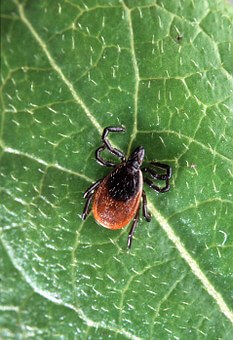If you are a pet owner, you will already know that flea and tick treatment for dogs is a year-round issue. However, there are certain times of the year when the flea and tick populations flourish. This can be when weather starts to get warmer. It can mean far more cases of tick-borne diseases in people and animals. The key to successful flea and tick treatment for dogs is knowing exactly what you are dealing with. So help is at hand with our no-panic guide to tackling fleas and ticks on your dog.
How do we know if there will be lots of ticks?
Mice transmit Lyme disease very efficiently and ticks thrive on mice, with approximately 50 to 100 ticks covering a mouse’s face.1 If there is a plague of mice in one year, scientists know that the following year will see a higher number of ticks. According to an article in the Guardian,2 Lyme disease is becoming more common in the UK. This has been shown by a study in Hampshire, which over a 20-year period saw a 10-fold increase in cases of the disease.
Why do you need to protect your dog from fleas and ticks?
Dog fleas survive by biting the host (the dog), which initially causes itching and redness on the dog’s skin. Some dogs can become severely anaemic because of the blood loss caused by a flea infestation. Others develop a hypersensitivity to the saliva from fleas, which may make dogs scratch more intensely and may lead to hair loss and abrasions, which ultimately can lead to infections.

Fleas are intermediate hosts for tapeworms, so there is a likelihood of dogs ingesting tapeworms too. Fleas carry other diseases such as the plague, typhus, and myxomatosis.
Ticks also spread disease. If your dog gets bitten by a tick it can cause a wide range of health issues. The most commonly known is Lyme disease, which causes swelling at the joints and can result in lameness. Rocky mountain spotted fever is another illness, which causes fever and lameness plus other symptoms. Babesiosis can also occur. Ticks can cause your pet to become anaemic and certain species of female ticks cause paralysis in dogs.

How do you protect your dog?
Use a flea and tick treatment for dogs and ensure that you apply the treatment as directed by the manufacturer. Consistency is important, as skipping a treatment can mean months trying to get back on top of the problem.
In your garden, prevent ticks from thriving by keeping lawns mowed, ensuring that there aren’t big piles of leaves and keeping trees and hedging trimmed. Try to keep fleas at a minimum by deterring wildlife from entering your garden, as they bring plenty of fleas with them.
Protecting your dog from ticks is not particularly easy. Ticks can attach themselves to your pet when you are out walking your dog without you realising. Try to keep your pet away from areas where there is a particularly high tick infestation – your veterinarian may be aware of locations in your area that are best avoided.
What to do if your dog gets bitten by a tick
Ticks often become attached around the head, ears, neck, and feet of your pet, but they can show up in other areas too. Always check your dog thoroughly following a walk. If you find a tick on your dog, don’t just pull the tick off as it can leave parts of the tick behind, which will cause further problems. There are products that you can buy at pet shops that allow you to lift the tick safely off your dog’s skin. Alternatively, you can remove a tick simply using tweezers. Use clean tweezers. Grasp the tick as close to the dog’s skin as possible. Pull it out of the skin in one straight, steady motion. Always wear gloves to ensure that you don’t get bitten by the tick too.
Any items in your home that come into contact with a dog with fleas will need to be washed in hot water. Dog blankets, cushion covers and the dog’s bedding will all need to be cleaned thoroughly. It can also be helpful to equip your car with a rubber boot mat such as a Travall Liner, to protect your carpeting from dirt and to make eradication of fleas easier.
If you have questions or concerns about the best flea and tick treatment for dogs or how to treat your pet for problems associated with these bugs, speak to your local veterinarian. Your veterinarian can advise you based on your location, the breed and size of your dog, and based on any other health conditions that your dog may have.
References
- http://www.npr.org/sections/goatsandsoda/2017/03/06/518219485/forbidding-forecast-for-lyme-disease-in-the-northeast?utm_source=twitter.com&utm_medium=social&utm_campaign=npr&utm_term=nprnews&utm_content=20170306
- https://www.theguardian.com/lifeandstyle/2017/aug/22/ticks-lyme-disease-matt-dawson-harm
Information given in this article is not a substitute for advice from a qualified medical professional. Please consult a vet for advice specific to your dog.